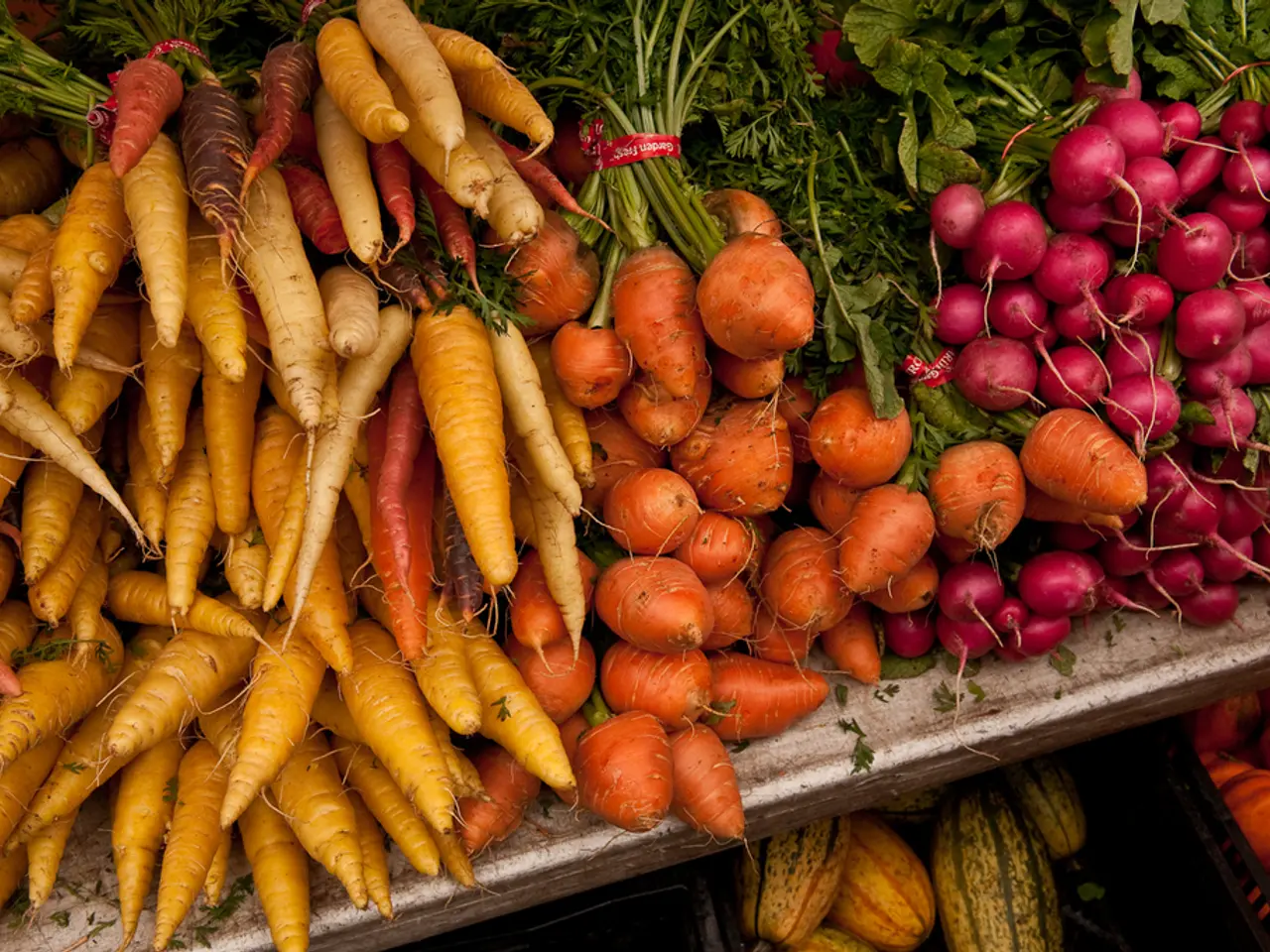Readying your backyard for Autumn and Winter's chilly season
As the autumn leaves begin to fall and the days grow shorter, it's time to prepare your garden for the upcoming winter. Here are some essential tips to help you winterize your vegetable, herb, berry, perennial, tree, and shrub gardens effectively.
General Garden Bed Preparation
Start by removing spent summer vegetables and herbs, especially those that show signs of disease. Compost healthy plant material, but discard diseased plants to prevent pests and fungi from overwintering [1]. Thoroughly weed garden beds, removing roots, and rake out debris to reduce pest habitats and improve air circulation for winter crops [1]. Turn and loosen soil with a fork or hoe to improve drainage and reduce compaction caused by summer watering or foot traffic [1]. Spread a layer of leaves or organic mulch over beds to prevent soil compaction by winter rain, suppress weeds, boost soil fertility, and improve structure [3].
Vegetables and Herbs
Test your soil pH; if it's below 6, apply lime (about 5 lbs per 100 sq ft) to balance acidity before winter [3][4]. Many vegetables, such as tomatoes, squash, peas, beans, etc., cannot tolerate cold at all and will need protection during fall and winter [5]. However, parsnips will taste better when left to mature near freezing temperature but should be dug and stored before the ground freezes [6]. Herbs like sage, thyme, and parsley are resilient to cold climate but parsley requires a cover-up on cold nights [7].
Berry Plants (e.g., Goji Berries)
In late winter, prune out dead or crossing branches to encourage spring growth [2]. Apply thick organic mulch around the base to insulate roots, retain moisture, and protect from frost, especially in heavy soils [2]. Ensure plants have full sun and good air circulation to reduce disease risk; cover with breathable fabric during severe cold as needed [2].
Perennials, Trees, and Shrubs
Avoid major pruning in fall; wait until late winter or early spring (around February) to prevent new growth that can be damaged by cold weather [3][4]. Clean up fallen fruit and debris under trees to reduce disease and pests such as apple scab and codling moths next season [3][4]. Know specific plant pruning needs: do not prune spring-blooming shrubs (e.g., lilacs, azaleas, forsythia) until after they flower [3][4].
Tools and Maintenance
Before storing tools for winter, clean, dry, sharpen, oil moving parts, and treat wooden handles to prevent cracking [3][4].
Additional Tips
- Outdoor containers should be stored upside down before the climate gets too cold to prevent cracking.
- Small trees and shrubs can be insulated with snow fencing, straws, or shredded leaves during extreme cold.
- Potatoes need to be dug and stored as soon as the cooler climate sets in and their skins should be dried for two weeks before storage.
- Perennials and flowering shrubs should be watered deeply during the fall season.
- Blueberries should be planted in late winter to ensure an excellent yield.
- Delicate greens, like lettuces, cannot withstand the frost and will need protection.
- Shrubs and trees should be watered during the fall season and quitted once the soil freezes.
- Frost-resistant crops like carrots, turnips, beets, parsnips, and rutabagas can survive the dropping temperature.
- Regular maintenance of young trees and small shrubs during the cold season includes removing broken branches and unwanted debris.
- Multi-stemmed deciduous trees need protection from breakage brought on by heavy snow and ice.
- Horticultural tape, nylon strings, or strong cloth strips can be used to secure branches and prevent trunks from bending or breaking.
- Raspberries require pruning during the mid-fall and blackberries need protection and insulation as the cold season sets in.
- Chives are hardy but need to be dug up and planted in a pot for winter harvest.
- Most vegetables cannot withstand cold temperatures and require protection during fall and winter.
- Insulating blankets or additional mulch can protect shrubs from sunscald and animal damage during winter.
- Frost-resistant greens like cabbages and Swiss chard can withstand light frost.
- Most berries are resilient and will survive the cold climate.
- Rosemary is more fragile and will require shelter for the winter.
- Mulching perennials with a generous layer of straw, hay, peat moss, or leaves can protect them from the cold.
- Perennials will benefit from regular pruning and removing all the wilted leaves, decaying plants, and unwanted debris.
These practices collectively prepare garden plants for winter by protecting roots, improving soil health, reducing disease risk, and setting the stage for healthy growth in spring [1][2][3][4].
[1] Gardening Know How [2] The Spruce [3] The Old Farmer's Almanac [4] The Gardener's Network [5] Gardening Know How [6] The Spruce [7] Gardening Know How
Adopting home-and-garden practices, such as winterizing vegetable, herb, berry, perennial, tree, and shrub gardens, can significantly improve the overall health of your plants during the colder months. Maintaining a healthy lifestyle for your plants includes removing diseased plants, thoroughly weeding, turning the soil, and applying organic mulch to garden beds [1]. Additionally, tailoring your gardening efforts to the specific needs of each plant type, such as pruning berry plants or watering perennials during fall, ensures a flourishing home-and-garden lifestyle throughout the winter season [2].




